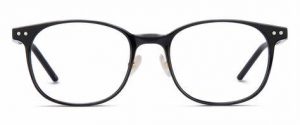
First. Integrated Process
1. Inspect the frame for damage and lens scratches.
2. Check whether the lens film layer is consistent and whether the color depth of the tinted lens is the same.
3. According to the order of the glasses, whether the corresponding frames and lens brand models match.
4. Adjust the frame to the standard level.
5. Measure the lens power (including astigmatism power and astigmatism axis), and punch out the optical center point.
6. Determine whether the lens power is consistent with the data (including astigmatism power and astigmatism axis).
7. Measure the interpupillary distance to see if it matches the data.
8. Determine and calculate the mutual difference between the upper and lower levels of the lens and the mutual difference between the left and right interpupillary distance.
9. According to the data showing near or far use, determine whether the position of the optical center point is correct (the distance of the optical center point should be in the upper center of the lens. The contrary is used for near use).
10. Check the remarks column of the optician order to see if there are special requirements for processing (such as modification, chamfering, polishing, etc.).
11. After cleaning the glasses, wrap them in a mirror cloth and put them in the mirror box. Sign the name and seal of the quality control officer on the data card, and put them into the pick-up cabinet.
Second, the full frame matters needing attention:
1. Check whether the closing is locked. If the lock is not tight, the lens is too large. (The joint is not more than 0.5mm)
2. Turn the lens after tightening the screw. If it is loose, the lens is too small.
3. Check if there are pads in the mirror ring. If there are pads or glue, it is unqualified.
4. Check whether the lens ring is deformed, whether the size of the two lens rings is the same, and whether there is a gap between the lens of the frame.
Third, half-frame notes:
1. Check whether the grooves are even and whether there are double or multiple grooves.
2. Whether the lens size is the same, whether the lens will be loose, and whether there is a phenomenon of jumping. If it is low, pay special attention to the nose.
3. Whether the lens has been polished and whether both sides are polished.
Fourth, borderless matters needing attention:
1. Whether the punch position is on a horizontal line.
2. Whether the size of the hole is appropriate, whether the lens will be loose, and whether the frame blade and the lens are compliant.
3. Whether the shape and size of the lenses are the same, have they been polished?
4. Whether there is a split in the punched position.